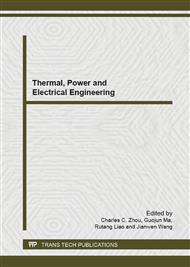p.98
p.103
p.109
p.116
p.120
p.127
p.133
p.138
p.144
Numerical Analysis of Hot Ends Length Effect on the Performance of Energy Separation in Vortex Tube
Abstract:
In this paper, effects of the vortex tube hot end lengths on the performance are studied, using a three-dimensional numerical fluid dynamic model. The hot end and cold end structure of vortex tube adapts the conical tube with the dilated side connecting a straight pipe. Structural mesh is employed. Different turbulence models are used, compared with experiment, considered of convergence and computing time, eventually, SST model is applied. In contrast to experimental data, numerical results are acceptable. By numerical analysis, it is observed that as the length of hot ends increases, the performance of energy separation increases significantly. However, while the length diameter ratio is more than 20, the performance does not increase any more. Even, it begins to decrease. Meanwhile, different hot end lengths flow is compared, and attemptable analysis is conducted to the flow phenomenon.
Info:
Periodical:
Pages:
120-126
Citation:
Online since:
August 2013
Authors:
Price:
Сopyright:
© 2013 Trans Tech Publications Ltd. All Rights Reserved
Share:
Citation:


